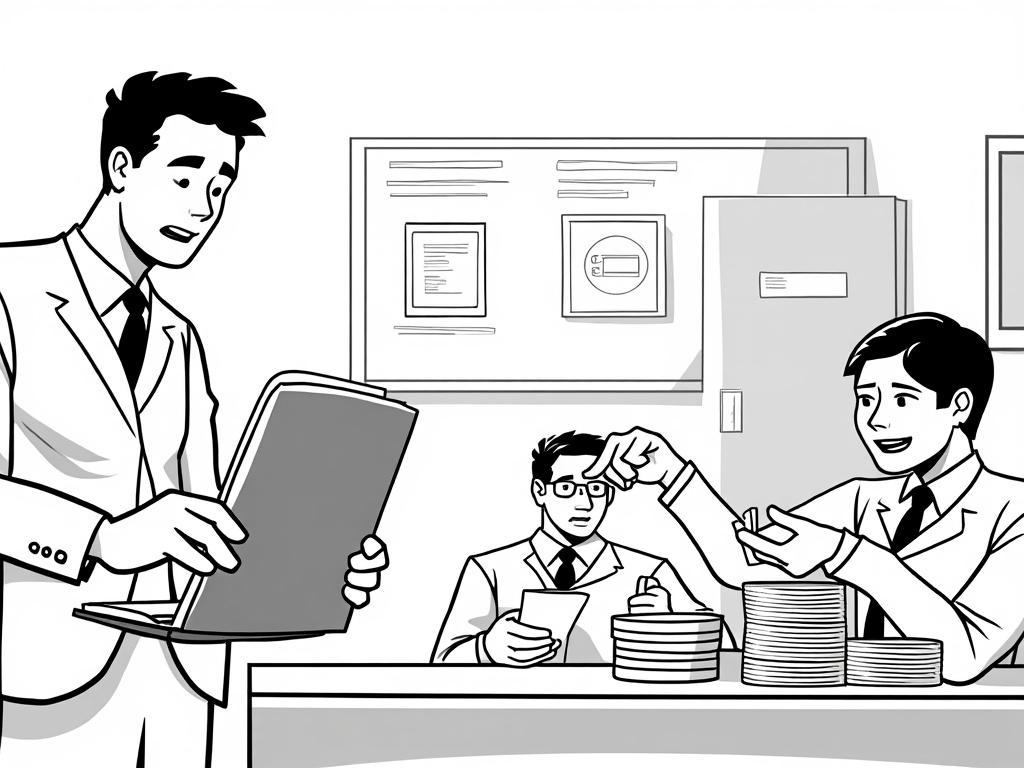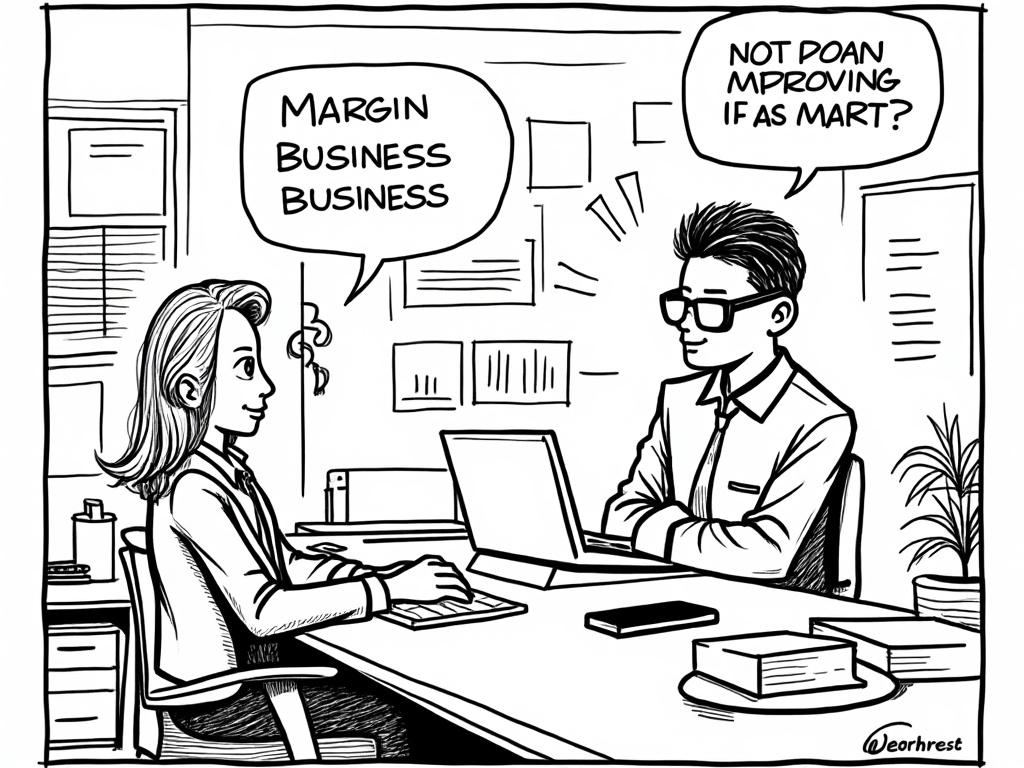
Charging VAT to EU vs Non-EU Customers: Complete Guidelines for Spanish Companies
Reading time: 12 minutes
Table of Contents
- Introduction: The VAT Challenge for Spanish Businesses
- VAT Fundamentals for Spanish Companies
- Charging VAT to EU Customers
- Handling VAT with Non-EU Customers
- The One-Stop Shop (OSS) Scheme
- Special Rules for Digital Services and Products
- Maintaining VAT Compliance
- Real-World Case Studies
- Conclusion: Building a Robust VAT Strategy
- Frequently Asked Questions
Introduction: The VAT Challenge for Spanish Businesses
Ever felt like you need a navigation system just to maneuver through Spain’s VAT regulations? You’re not alone. For Spanish companies selling across borders, VAT compliance isn’t just a bureaucratic hurdle—it’s a strategic business consideration that directly impacts pricing, competitiveness, and even cash flow.
Let’s be straightforward: VAT (IVA in Spain) management isn’t about administrative perfection—it’s about strategic navigation of a complex tax landscape. Get it wrong, and you face penalties, unhappy customers, and potential audit headaches. Get it right, and you’ve turned a compliance requirement into a competitive advantage.
Quick scenario: Imagine your Barcelona-based company just received orders from customers in France, Germany, the UK, and the United States—all on the same day. Each transaction triggers different VAT obligations. How do you ensure compliance while maintaining pricing competitiveness?
This guide transforms this complexity into a clear roadmap, helping Spanish businesses confidently navigate the crucial distinctions between EU and non-EU VAT requirements.
VAT Fundamentals for Spanish Companies
Before diving into international scenarios, let’s establish the foundation. In Spain, the standard VAT rate (IVA) stands at 21%, with reduced rates of 10% and 4% for specific categories of goods and services. This is your baseline, but international transactions introduce significant variations.
Pro Tip: Spanish VAT numbers always start with ES followed by your tax identification number (NIF). When verifying other EU companies’ VAT numbers, use the European Commission’s VIES system—it’s your first line of defense against VAT fraud.
Understanding Spanish VAT begins with recognizing three critical principles:
- Place of supply rules – Determining where a transaction is deemed to take place for VAT purposes
- Reverse charge mechanism – Shifting VAT responsibility from seller to buyer in certain circumstances
- Distance selling thresholds – Thresholds that trigger VAT registration requirements in other EU countries
As Manuel García, Tax Director at Deloitte Spain, explains: “The most common pitfall for Spanish businesses isn’t misunderstanding the basic rates—it’s failing to correctly identify where and when VAT liability shifts between seller and buyer in cross-border transactions.”
Charging VAT to EU Customers
When selling to customers within the European Union, your approach must be methodical and depends significantly on whether your customer is a business (B2B) or a consumer (B2C).
B2B Transactions Within the EU
For business-to-business sales within the EU, the process follows a straightforward principle: if your customer provides a valid EU VAT number, you generally don’t charge Spanish VAT. Instead, the transaction falls under the “reverse charge mechanism,” where your EU business customer accounts for VAT in their country.
Here’s your critical action sequence:
- Verify your customer’s VAT number through the VIES portal
- Record both VAT numbers (yours and the customer’s) on the invoice
- Explicitly state on the invoice: “Intra-Community supply exempt from VAT” or “VAT reverse charged”
- Include the invoice in your quarterly Intrastat declarations and Model 349 if applicable
Example: Imagine your Madrid-based furniture company sells office desks to a company in Milan. If they provide a valid Italian VAT number, you don’t charge Spanish VAT. Your Italian customer self-assesses Italian VAT through the reverse charge mechanism. However, you must still report this transaction in your Intrastat declarations and Model 349.
B2C Transactions Within the EU
When selling to EU consumers without a VAT number, the rules changed significantly in July 2021. Previously, you would charge Spanish VAT until you exceeded country-specific distance selling thresholds. Now, a simplified system applies:
- For sales under €10,000 annually (combined total to all EU countries): Charge Spanish VAT at 21%
- For sales exceeding €10,000 annually: Charge the VAT rate of the customer’s country
Once you exceed this threshold, you have two options:
- Register for VAT in each EU country where you have customers, or
- Register for the One-Stop Shop (OSS) system in Spain (more on this below)
“The 2021 VAT e-commerce package was revolutionary for small Spanish businesses,” notes Ana Martínez, VAT specialist at the Spanish Chamber of Commerce. “The €10,000 threshold and OSS system removed significant compliance barriers for companies just starting to explore EU markets.”
Handling VAT with Non-EU Customers
B2B Transactions Outside the EU
When selling to businesses outside the European Union, your goods or services are generally considered exports and are exempt from Spanish VAT. However, the customer may need to pay import VAT and potentially customs duties in their country.
Well, here’s the straight talk: while you don’t charge VAT, you still need documentary evidence proving the goods left the EU or that services were provided to a non-EU business. This typically includes:
- Export declarations
- Shipping documentation
- Customer’s business registration in their country
- Payment confirmation from outside the EU
Practical Scenario: Your Barcelona tech company provides consulting services to a Japanese corporation. You don’t charge Spanish VAT, but you must maintain evidence demonstrating the customer is a business established outside the EU. Your invoice should state: “Services provided to a non-EU business – outside the scope of Spanish VAT.”
B2C Transactions Outside the EU
When selling physical goods to non-EU consumers, exports are typically exempt from Spanish VAT. However, the customer will likely pay import VAT and duties when the goods enter their country.
For digital services to non-EU consumers, the place of supply is generally where the customer is located, meaning Spanish VAT doesn’t apply. However, you may need to register for VAT or a similar consumption tax in the customer’s country, depending on local regulations.
Pro Tip: Consider using marketplaces for small-volume sales to non-EU consumers. Since 2021, many marketplaces have become the deemed supplier for VAT purposes, handling VAT obligations on your behalf.
The One-Stop Shop (OSS) Scheme
The OSS scheme represents one of the most significant simplifications in EU VAT history, especially for Spanish companies selling to consumers across multiple EU countries.
How OSS Works for Spanish Companies
Instead of registering for VAT in multiple EU countries, you can:
- Register for OSS through the Spanish Tax Agency (AEAT) portal
- Charge the VAT rate applicable in each customer’s country
- Submit a quarterly OSS return through the Spanish portal
- Make a single payment covering VAT due to all EU countries
The Spanish Tax Agency then distributes the VAT to the relevant EU member states on your behalf.
“The OSS system has eliminated approximately 95% of the VAT registration burden for our e-commerce clients,” states Carlos Rodríguez, Partner at KPMG Spain. “Before OSS, a Spanish online retailer selling to consumers across the EU might need up to 27 VAT registrations. Now, they need just one.”
OSS Limitations
While revolutionary, OSS isn’t universal:
- It only covers B2C transactions, not B2B
- It doesn’t cover certain types of goods (like those subject to excise duties)
- It doesn’t eliminate the need for Intrastat reporting above certain thresholds
Ready to transform complexity into competitive advantage? Register for OSS if you’re approaching or have exceeded the €10,000 cross-border threshold.
Special Rules for Digital Services and Products
Digital services present unique VAT challenges for Spanish companies, particularly when determining where the service is “supplied” for VAT purposes.
Identifying Digital Services
The Spanish tax authority (AEAT) classifies these services as digital:
- Software downloads and subscriptions
- E-books, music, and digital media
- Online gaming and gambling services
- Streaming services
- Cloud-based applications
- Website hosting and maintenance
For these services, the place of supply is where the customer is located (with certain exceptions).
Determining Customer Location
Spanish businesses must make reasonable efforts to determine customer location, typically through:
- Billing address
- IP address geolocation
- Bank details
- Mobile country code
You need two non-contradictory pieces of evidence to establish customer location reliably.
Case Study: Madrileña Digital, a Spanish e-learning platform, implemented a location verification system that checks IP address against billing information. They registered for OSS and now automatically apply the correct VAT rates—from 17% in Luxembourg to 27% in Hungary—without the customer even noticing the complexity behind the scenes.
Maintaining VAT Compliance
Compliance isn’t a one-time effort; it’s an ongoing operational requirement that Spanish companies must integrate into their business processes.
Essential Documentation Requirements
For both EU and non-EU transactions, meticulous record-keeping is crucial:
- Maintain VAT evidence for at least 10 years (Spanish requirement)
- Ensure invoices contain all required elements for cross-border transactions
- Keep proof of customer status (business vs. consumer)
- Document verification of EU VAT numbers
- Preserve evidence of customer location for digital services
Common Compliance Pitfalls
According to Spanish VAT inspectors, these are the most frequent issues facing companies:
- Failing to verify EU VAT numbers before exempting transactions
- Misclassifying products or services when determining applicable rates
- Ignoring distance selling thresholds or OSS registration requirements
- Insufficient evidence for exempt exports to non-EU countries
- Incorrect reporting on Intrastat declarations and Model 349
“When we audit Spanish companies, we consistently find that cross-border VAT errors aren’t typically deliberate—they stem from misunderstanding the complex interplay between Spanish and EU VAT rules,” explains Elena Sánchez, VAT inspector at AEAT.
Real-World Case Studies
Case Study 1: Manufacturing Sector
Valencian Furniture Exports, a mid-sized manufacturer in Valencia, faced VAT compliance challenges when expanding sales to both EU and non-EU markets. Their solution:
- Implemented automated VAT validation for B2B EU customers
- Registered for OSS to handle B2C sales across the EU
- Created country-specific shipping documentation packages for non-EU exports
- Developed clear pricing strategies accounting for different VAT treatments
Result: Within 18 months, they increased EU sales by 34% while maintaining full VAT compliance and avoiding penalties that had previously cost them €45,000 in a single audit.
Case Study 2: Digital Services Provider
Barcelona Software Solutions, a SaaS provider, struggled with determining VAT treatment for their cloud-based services. Their approach:
- Integrated IP-based location detection with two-factor verification
- Implemented dynamic pricing displaying correct local VAT rates
- Registered for VAT MOSS (now OSS) for EU sales
- Engaged local tax experts in key non-EU markets (US, UK, Canada)
Result: Their streamlined system now automatically handles VAT for customers in over 60 countries, with compliance costs reduced by 40% compared to their previous manual processes.
Comparative VAT Treatment for Spanish Companies
| Customer Type | EU Location | Non-EU Location | Documentation Required | Reporting Obligation |
|---|---|---|---|---|
| Business (B2B) | No Spanish VAT if valid VAT number provided (reverse charge) | No Spanish VAT (export) | Verified VAT number (EU) or business proof (non-EU) | Intrastat and Model 349 (EU only) |
| Consumer (B2C) – Goods | Spanish VAT if under €10,000 annually; destination country VAT if over | No Spanish VAT (export) | Proof of delivery location | OSS return if over threshold |
| Consumer (B2C) – Digital Services | Destination country VAT rate (through OSS) | Generally no Spanish VAT, but potential local registration | Evidence of customer location | Quarterly OSS return |
| Consumer (B2C) – Services | Usually Spanish VAT (exceptions apply) | Usually no Spanish VAT | Nature of service and customer status evidence | Standard Spanish VAT return |
Conclusion: Building a Robust VAT Strategy
Navigating the complex landscape of charging VAT to EU versus non-EU customers isn’t just about compliance—it’s about creating a strategic advantage for your Spanish business. By understanding the fundamental distinctions between these markets, you can price competitively, avoid unexpected tax liabilities, and build systems that scale with your international growth.
Remember these key principles:
- Verify and document customer status (business vs. consumer) and location
- Leverage the OSS system for EU consumer sales above the €10,000 threshold
- Maintain meticulous records for both EU and non-EU transactions
- Stay current with regulatory changes, particularly for digital services
- Consider VAT implications when setting prices and entering new markets
With these guidelines in place, your Spanish company can transform VAT compliance from a bureaucratic burden into a foundation for confident international expansion. The most successful Spanish exporters don’t just react to VAT requirements—they anticipate them and build them into their business strategy from day one.
Frequently Asked Questions
How does Brexit affect Spanish companies selling to UK customers?
Since Brexit, the UK is considered a non-EU country for VAT purposes. When selling goods to UK customers, Spanish VAT doesn’t apply, but goods may be subject to UK import VAT and potentially customs duties. UK customers will typically pay these upon importation. For services, the rules largely parallel those for other non-EU countries, but specific UK regulations may apply. Spanish companies selling goods to UK consumers exceeding £135 in value may need to register for UK VAT. For sales below this threshold, many Spanish businesses use marketplaces that handle the VAT obligations or register directly with HMRC.
What are the penalties for VAT non-compliance for Spanish companies?
The Spanish tax authority (AEAT) categorizes VAT infractions as minor, serious, or very serious. Penalties typically range from 50% to 150% of the unpaid tax, with additional interest charges. For late filings without economic impact, penalties start at €200. For failure to use the OSS system when required, penalties can include forced VAT registration in each customer’s member state, with potential retrospective application. Additionally, consistent non-compliance can trigger a full tax audit, potentially examining other tax areas beyond VAT. The best protection is implementing systematic compliance procedures and promptly correcting any identified errors through voluntary disclosure.
How can Spanish e-commerce businesses automate VAT compliance across multiple countries?
Spanish e-commerce businesses should consider implementing specialized VAT compliance software that integrates with their existing systems. These solutions can automatically determine the correct VAT treatment based on customer location, business status, and product type. Leading platforms can validate EU VAT numbers in real-time, calculate appropriate rates for each transaction, generate compliant invoices, and prepare data for OSS returns. For companies selling through multiple channels (website, marketplaces, physical stores), look for systems that consolidate this data. Many Spanish companies find that while implementation requires initial investment, the reduction in compliance errors, penalties, and administrative overhead typically delivers positive ROI within 12-18 months.



